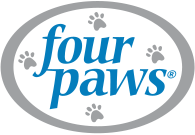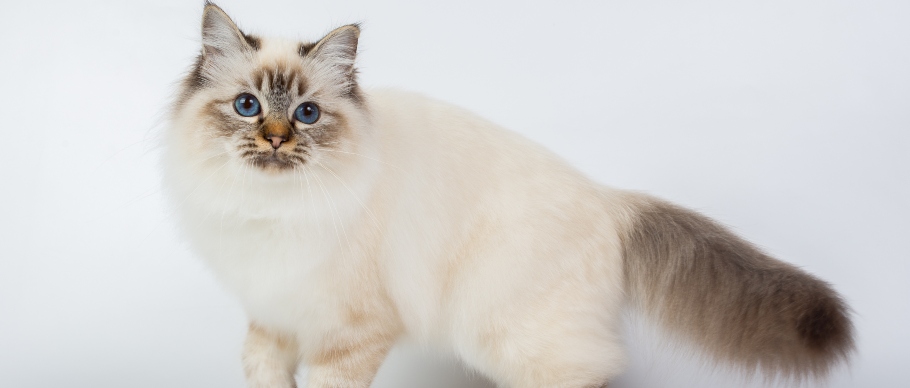11 Long-Haired Cat Breeds (& How to Groom Them)
Our feline friends come in all different shapes, sizes—and even fur lengths! From long coats to fluffy heads of hair, these kitties’ coats feature unique textures and patterns we can’t get enough of. Get to know these 11 long-haired cat breeds and learn how to best take care of their magnificent manes.
#1. Birman
Known to many as the “Sacred Cat of Burma,” the Birman is a kitty with a mystifying past. While some legends say the Birman was once a companion to Burmese priests in ancient temples, others believe this breed originated on the coast of France. Despite their questionable history, there are no doubts when it comes to recognizing the Birman. With long fur and famous white “gloves” on each paw, this cat is sure to stand out!
Coat Maintenance: Although their silky fur is long, the Birman has no undercoat, which means they are less prone to matting. Weekly brushing will help keep their coat healthy and shiny.
#2: Siberian Forest Cat
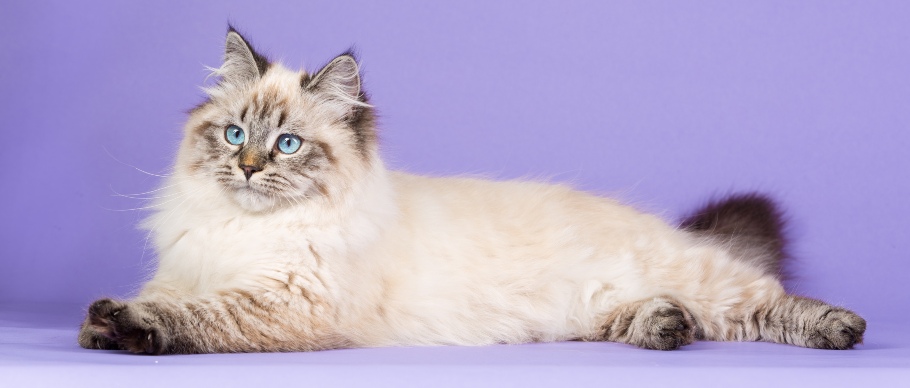
The Siberian Forest Cat is a champion of the cold! Originally from Siberia, this long-hair cat breed has a dense coat that is made up of three layers to get through the harsh Russian winter. It is a common assumption that more fur leads to more allergies, however, many breeders will claim that Siberians are a hypoallergenic cat breed. That is because this feline naturally produces lower levels of Fel d 1, which is a protein responsible for cat allergies.
Coat Maintenance: Because the Siberian has three layers of fur, they require daily grooming to help prevent mats. Use a cat slicker brush on this kitty to keep their fur healthy, clean, and looking good!
#3: Persian

Back in ancient Mesopotamia, this feline was cherished for their long hair, flat face, and snub nose. In fact, they quickly became many royals’ preferred breed. Fast-forward to the 19th century and even Queen Victoria famously adored her Persian cats. Today, this breed is appreciated for its gentle, loving energy, which is why it remains popular many years later. The Persian cat really does deserve the royal treatment!
Coat Maintenance: The Persian’s coat is prone to matting, so you will want to properly groom your cat to help prevent mats and keep their fur knot-free.
#4: Ragdoll

With their fluffy coats and docile demeanor, there’s so much to love about the Ragdoll! This feline comes from California, where they were bred as cuddly cats. In fact, the reason they are named “Ragdolls” is because this kitty will notoriously go limp when you pick them up! Whether they are flopped over in your lap or blissfully bathing in a sunspot, the Ragdoll is an affectionate companion to have around.
Coat Maintenance: Although they have a lot of fur, this kitty is less prone to matting than other cat breeds with long hair. Spend some extra-special quality time together each week by brushing your Ragdoll with a grooming mitt to help remove loose hair.
#5: Norwegian Forest Cat

While they may look like a mystical forest creature, this long-hair cat breed is just a friendly feline! As their name suggests, the Norwegian Forest Cat is an ancient breed native to the forests of Norway. Today, this independent kitty’s wild nature still shines through their big personality. Norwegian Forest Cats are very good climbers and will often explore around the home, so it’s best to provide them with a safe place to do so.
Coat Maintenance: The Norwegian Forest Cat’s coat can come in a variety of colors and patterns, including calico! It is extremely dense to adapt to the cold Scandinavian weather. Daily brushing will help keep mats and knots away for a clean, tamed look.
#6: Himalayan

This feline is full of mystery! While some registries classify this Himalayan as a type of Siamese cat, others believe this breed is a Siamese-Persian hybrid. Regardless, several registries still consider the Himalayan as their own unique breed. While you may assume this kitty comes from the famous Asian mountain range, it’s likely this cat was first bred in the United States! The reason they are deemed “Himalayans” is because of their distinct coloration, which resembles a Himalayan rabbit.
Coat Maintenance: Many long-haired cat breeds are more susceptible to developing hairballs, including the Himalayan. In addition to daily grooming, you may want to consider giving your cat a hairball control supplement to help prevent the formation of hairballs.
RELATED: Help! My Cat is Getting Hairballs
#7: Maine Coon
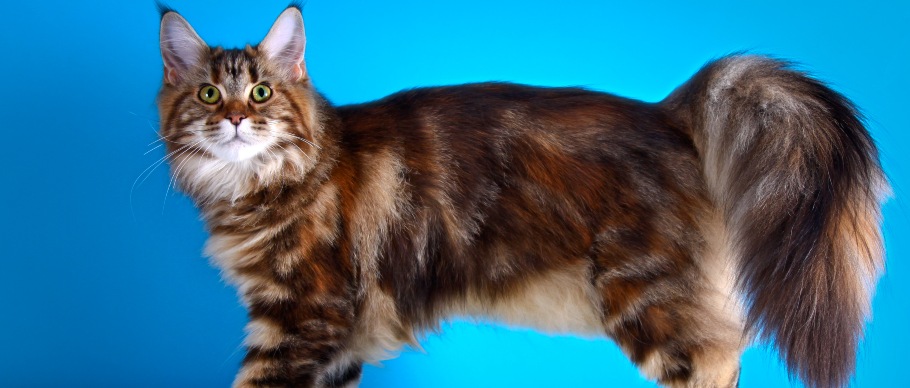
The Maine Coon breed has been growing in popularity (and maybe even size) over the last few years. This gentle giant is considered one of the largest cat breeds! In fact, the world's longest cat was a Maine Coon who reached 123 centimeters in length, according to Guinness World Records. This highly sociable feline is loved for so many reasons—including their dog-like qualities, such as a fascination with water and tendency to vocally express themselves.
Coat Maintenance: Although the Maine Coon has a dense coat, they only require regular grooming to keep their coat healthy.
#8: Turkish Van
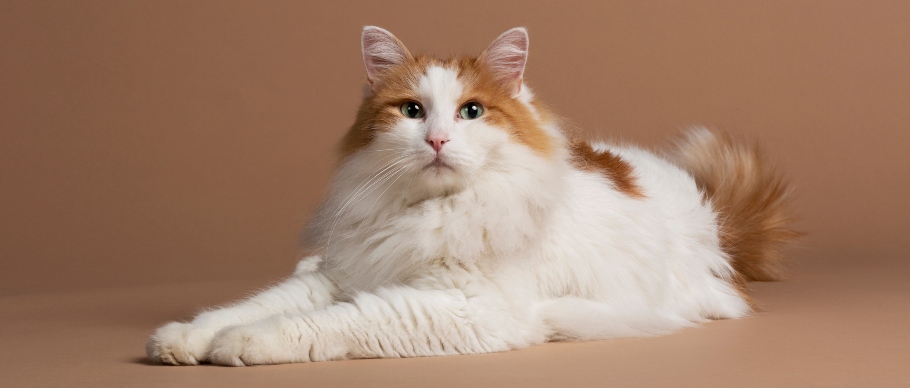
If you think all cats hate water—well, think again! The Turkish Van is famously nicknamed “the swimming cat” because of their fascination with water and tendency to takes dips. This rare cat breed is originally from Lake Van in Turkey, where they supposedly would cool off in the lake during the hot summer months. They even have a waterproof coat, which makes swimming the perfect summer activity for this kitty!
Coat Maintenance: If you do have a Turkish Van that likes to test the waters, be sure to give your cat a bath afterward to clean any germs from their skin.
#9: Balinese
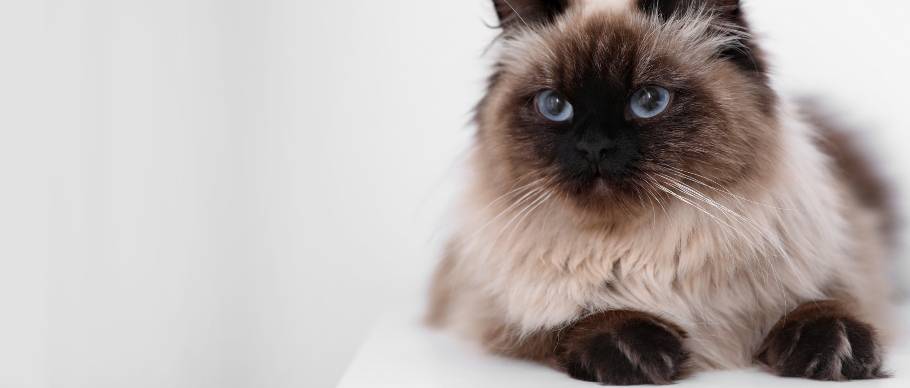
If the Balinese looks familiar, that’s because you might know their short-haired relative—the Siamese cat! This purebred originated because of a natural mutation that caused the Siamese to grow longer fur. While the Siamese is a small cat breed that typically stays under eight pounds, the Balinese tends to grow a few pounds larger. This feline still sports that famous Siamese coat color and piercing blue eyes, along with a social (and vocal!) personality.
Coat Maintenance: The Balinese have silky fur that usually does not tangle, but weekly brushing will help keep their coat looking shiny and clean.
#10: LaPerm

“LaPerm” is a fitting name for this kitty and its cute curls! LaPerm cats are a relatively new breed, which resulted from a naturally occurring genetic mutation that caused their wavy hair. While there are only a few curly-coated cat breeds, LaPerms are not related to the well-known Devon Rex or Cornish Rex. In addition to their famous looks, this feline also has a big personality. LaPerms are known for mischievous behaviors, often seeing what they can get into around the house.
Coat Maintenance: If you’re giving your LaPerm a bath, be sure to use a cat-friendly shampoo and pat their body dry with a towel rather than a blow-dryer to keep their curls intact.
#11: American Bobtail
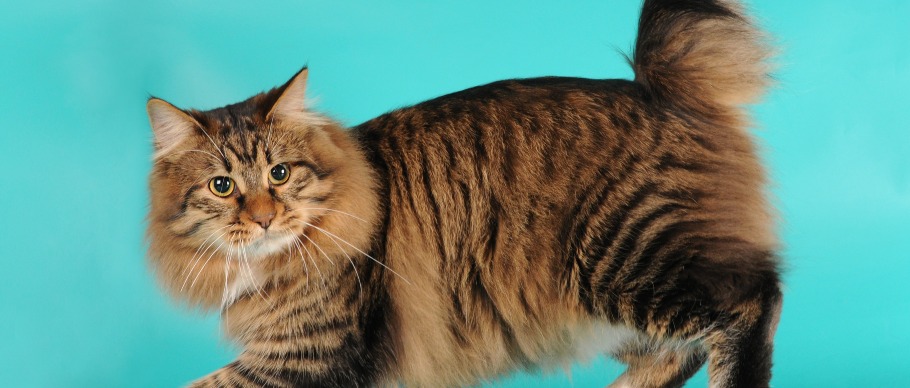
Is the American Bobtail really part bobcat? Despite similar physical features, the American Bobtail is fully domestic and no part “big” cat. Their bobbed tail is actually due to a natural genetic mutation—not a strange crossbreeding incident. This long-hair cat breed is incredibly athletic and tends to have a stockier build. Despite their wild looks, this kitty has a gentle heart! In fact, American Bobtails are often used as therapy cats.
Coat Maintenance: An American Bobtail’s coat can be prone to matting, so it’s important to groom it regularly with a slicker brush.
Cat Hair, Don't Care!
There’s nothing better than cuddling with a fluffy feline! While they may require more extensive grooming, these long-haired cat breeds will quickly win you over with their stunning looks (and amazing personalities!).
Looking for a feline friend who won’t leave fur behind everywhere? Check out this list of cats that don’t shed much.
